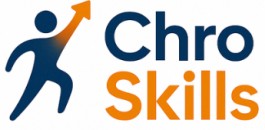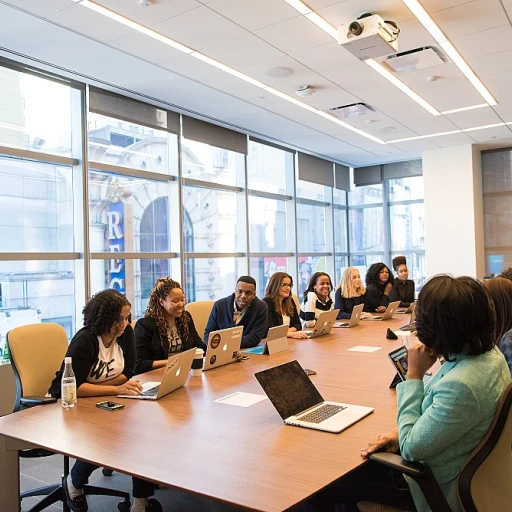
The Role of a CHRO in Shaping Organizational Culture
Influencing Organizational Culture through Leadership
The Chief Human Resources Officer (CHRO) plays a pivotal role in shaping and nurturing a positive organizational culture. This role is not just about ensuring policies and procedures are in place; it's about fostering an environment where both individual and team performance thrive. When considering organizational behavior, it is essential to understand that the behavior of employees is significantly influenced by the culture in which they operate. Cultural transformation requires CHROs to deeply engage in understanding organizational dynamics. This involves observing and interpreting the nuances of human behavior within teams and across the company. The insights drawn from these behavioral observations can help leaders in making informed decisions that align with organizational goals. Furthermore, fostering a culture of open communication allows employees to express their thoughts freely, promoting a work environment where everyone is valued.Employee Engagement and Organizational Performance
High levels of employee engagement are often linked to strong organizational performance. However, fostering such engagement requires more than just surface-level initiatives. CHROs must dive into the principles of behavior theory and organizational studies, such as the Hawthorne Studies, to understand what truly motivates employees. This deeper understanding aids in crafting an engaging work environment that encourages employees to contribute their best. Creating a culture of engagement also means addressing the behavioral dynamics within teams. Effective conflict resolution strategies can prevent disruptions and contribute to a harmonious workplace, leading to improved organizational outcomes. Organizations that emphasize employee engagement naturally tend to see an improvement in their overall company culture.Fostering an Inclusive Work Environment
Inclusivity is a foundational element of a healthy organizational culture. A CHRO has a responsibility to ensure that diversity and inclusion are woven into the fabric of the organization. By cultivating a diverse and inclusive workplace, organizations tap into a wider range of perspectives and ideas, which enhances decision-making and drives innovation. Understanding the unique cultural and behavioral dynamics of diverse team members can be a challenge, yet it is crucial for the CHRO to address these aspects proactively. Companies that commit to building diverse teams often see an elevation in employee morale and workplace dynamics. For more on fostering inclusivity and building equitable systems within organizations, visit achieving system equity. Overall, the influence of a CHRO in shaping organizational culture is both strategic and transformative, involving a deep commitment to understanding and enhancing workplace dynamics.Key Skills for Managing Workplace Dynamics
Essential Capabilities for Handling Workplace Dynamics
In the ever-evolving realm of workplace environments, understanding the nuances of organizational behavior and workplace dynamics is quintessential for a Chief Human Resources Officer (CHRO). Successfully managing these dynamics plays a pivotal role in fostering a productive and harmonious work atmosphere. Below are vital skills and attributes needed to adeptly navigate these complexities:
- Understanding Human Behavior: Grasping behavior organizational patterns is imperative for recognizing the individual differences in employees. Insights from behavior studies can aid in identifying what motivates team members, thereby enhancing employee engagement and overall organizational performance.
- Effective Communication: Mastering clear and empathetic communication is essential. It facilitates open dialogue between management and personnel, paving the way for effective conflict resolution and avoiding misunderstandings that could potentially disrupt workplace dynamics.
- Decision Making: The ability to make informed decisions is crucial in steering the organization through both daily operations and unexpected changes. Taking into consideration various aspects of the work environment, decision making should reflect a balance between company goals and employee needs.
- Conflict Resolution: Navigating disputes and fostering understanding among employees or teams is a vital skill for maintaining a cohesive organizational culture. Efficient conflict resolution leads to stronger teamwork and improved morale.
- Cultural Awareness: Understanding and appreciating diverse organizational cultures within the workplace is imperative. By recognizing different perspectives and fostering inclusivity, a CHRO can create a harmonious work environment conducive to collaboration and mutual respect.
These key skills, integral to human resources management, guide CHROs in maintaining robust leadership amidst both predictable and unforeseen workplace dynamics. For insights into safeguarding your leadership role, especially in challenging circumstances, visit navigating leadership challenges.
Strategic Leadership in Human Resources
Effective HR Leadership Strategies
As a Chief Human Resources Officer (CHRO), the ability to provide strategic leadership within the human resources function is paramount. This involves not only managing immediate workplace dynamics but also influencing the broader organizational culture and aligning HR objectives with the company's strategic direction.
Leaders in human resources need a comprehensive understanding of organizational behavior and dynamics. This understanding encompasses individual employee behavior as much as it does the collective performance of the workforce. Being effective in this role requires strong decision-making skills and the ability to guide teams through both challenges and innovations.
One key aspect is the emphasis on creating a work environment that fosters employee engagement and enhances organizational performance. Strong leadership here ensures that employees feel valued, understood, and equipped to perform at their best.
- Understanding workplace dynamics: By studying organizational behavior, HR leaders can identify and implement strategies that both improve team collaboration and address potential conflicts.
- Promoting a positive organizational culture: The organizational culture set by HR leadership impacts employee morale and has wide-reaching effects on overall company culture.
- Facilitating effective team management: By understanding human behavior and organizational theory, CHROs can optimize team dynamics and drive performance improvements.
- Prioritizing conflict resolution: A CHRO knows that conflict within teams can be one of the biggest disruptors to organizational success. They must be equipped to resolve issues effectively and swiftly.
Additionally, it's crucial for HR leaders to leverage the insights gained from behavior studies and management theories, such as those from the Hawthorne studies, to continuously enhance the work environments they oversee. This not only prevents stagnation but also encourages innovation and progress within the organization.
Navigating Change and Transformation
Guiding Through Organizational Change
In today's fast-paced business environment, the ability to navigate change and transformation is a critical skill for any Chief Human Resources Officer (CHRO). Organizations are constantly evolving, and the CHRO plays a pivotal role in ensuring that these transitions are smooth and effective. Understanding organizational behavior and workplace dynamics is essential in this process, as it allows the CHRO to anticipate challenges and address them proactively.
Change management requires a deep understanding of both individual and collective human behavior. The CHRO must be adept at recognizing how changes in the work environment can impact employee behavior and organizational performance. This involves studying organizational theory and behavior studies to develop strategies that align with the company's culture and goals.
Facilitating Effective Communication
Effective communication is at the heart of successful change management. The CHRO must ensure that all team members are informed and engaged throughout the transformation process. This involves creating open channels for dialogue and feedback, which can help in understanding employee concerns and fostering a culture of transparency. By doing so, the CHRO can enhance employee engagement and ensure that the workforce remains motivated and productive.
Implementing Strategic Decision Making
Strategic leadership is crucial when navigating organizational change. The CHRO must be skilled in decision making, balancing the needs of the organization with those of its employees. This requires a comprehensive understanding of workplace dynamics and the ability to make informed decisions that support both short-term and long-term organizational goals.
Moreover, the CHRO must be prepared to address potential conflicts that may arise during periods of change. Conflict resolution skills are essential in maintaining a harmonious work environment and ensuring that teams remain cohesive and focused on their objectives.
Adapting to Technological Advancements
As technology continues to reshape the workplace, the CHRO must leverage these advancements to facilitate change and improve organizational performance. This includes implementing new tools and systems that enhance communication, streamline processes, and support a more agile work environment. By embracing technology, the CHRO can drive innovation and ensure that the organization remains competitive in an ever-changing market.













